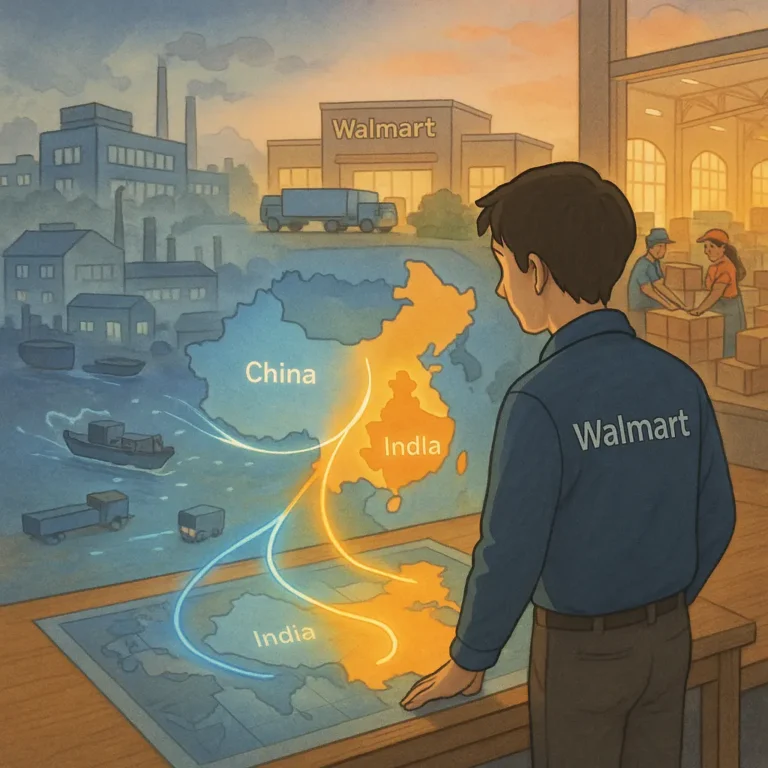
Strategic sourcing focuses on more than just the purchase price of the supply.
It achieves this by ensuring every stage of the supply process is accounted for and negotiated.
Manufacturers need raw materials, and service providers need infrastructure to help facilitate the supply chain. Whatever strategy (vertical or horizontal integration) powers your supply chain, there is no doubt a need for suppliers. However, each supply chain’s types and numbers of suppliers may differ. Businesses don’t just want the supplies; they want them under certain conditions, and that is where strategic sourcing plays a vital role.
We will explore the concept in depth in this blog post.
What is Strategic Sourcing?
As mentioned earlier, strategic sourcing is a bit more complicated.
While sourcing may focus solely on getting the product needed at a fair price, strategic sourcing has a different objective. It focuses on getting the required product by building strategic and long-term relationships with the supplier. Strategic sourcing is typically done with an eye on the total cost of ownership of the product.
There are several sourcing strategies in Africa, but Strategic sourcing is a core part of vendor management on the continent.
It entails identifying, evaluating, and establishing a relationship with a supplier to increase the profitability and efficiency of the supply chain.
Importance of Strategic Sourcing in Africa
As Africa’s economy continues to rise, supply chains play a significant role, and strategic sourcing is at the forefront of that development. The importance of strategic sourcing cannot be overemphasized, especially in Africa.
Here are some of the reasons why:
1. Cost Savings
Strategic sourcing allows African businesses or supply chains to optimize their procurement processes while negotiating favourable terms with suppliers.
It is a concept that encourages the consolidation of purchasing processes and carefully selected suppliers. Through this consolidation, businesses can achieve cost savings via the economics of scale channel, bulk discounts, and better pricing agreements. This, in turn, enhances their competitiveness in the local and international markets.
2. Supplier Relationship Management
Strategic sourcing emphasizes the development and management of strong relationships with suppliers.
Building robust partnerships with suppliers is essential in Africa, where supply chains can be complex and diverse.
There are generally four categories of suppliers:
- Strategic
- Leverage
- Bottleneck
- Routine
Effective supplier relationship management leads to better collaboration, improved communication, and increased trust. It enables businesses to access reliable and high-quality products and services, ensuring a smooth and uninterrupted supply chain.
3. Local Economic Development
A key factor in strategic sourcing is the localization of the supply chain.
By prioritizing local suppliers and engaging in responsible sourcing practices, businesses can support local industries, create employment opportunities, and promote sustainable economic growth. Strategic sourcing in Africa can contribute significantly to local economic development. Initiatives that involve local communities can foster entrepreneurship, enhance skills development, and have positive social impacts.
4. Risk Mitigation
Africa’s business landscape can be risky, including political instability, regulatory changes, natural disasters, and supply chain disruptions.
Strategic sourcing helps mitigate these risks by diversifying the supplier base, establishing backup suppliers, and developing contingency plans. By spreading the sourcing network across different regions and countries, businesses can minimize the impact of localized risks and ensure the continuity of operations.
5. Quality and Innovation
Strategic sourcing promotes the procurement of high-quality products and encourages supplier innovation.
By working closely with suppliers, businesses can set quality standards, conduct regular audits, and monitor compliance. Additionally, by fostering open communication and collaboration, businesses can tap into supplier expertise and encourage innovation, leading to the introduction of new products, improved processes, and enhanced competitiveness.
6. Sustainability and Corporate Social Responsibility
Strategic sourcing allows businesses to align their procurement practices with sustainability and corporate social responsibility (CSR) objectives.
This includes sourcing from suppliers who adhere to ethical and environmental standards, promoting fair trade practices, and supporting local communities. Embracing sustainability and CSR initiatives helps businesses build a positive reputation and contributes to long-term environmental and social well-being.
Implementing Successful Strategic Sourcing in Africa
The following steps will guide you in successfully implementing strategic sourcing in your supply chain, thereby exposing your supply chain to all the benefits mentioned above.
Step 1-Identify the Problem
Typically, for most strategic sourcing in Africa, the sourcing or procurement team needs to identify the need they are solving before the process can begin.
The team would need to answer questions such as:
- What do we need?
- Why do we need it?
- How does it affect our bottom line?
- Can we integrate it into our supply chain?
- Can we, and do we want to do this in-house?
These questions need to be answered before going forward with sourcing.
Finally, during the process, categorize the need and its importance to the supply chain.
Step 2- Market Research and Analysis
This stage of the strategic sourcing process is about analyzing the item’s market activity. Procurement teams need to identify critical activities related to the item. Some of these could be:
1. Price
2. Demand
3. Major suppliers
4. Quality of the product
Step 3-Identify suppliers you want to work with
After conducting a thorough market analysis of the team’s product needs, the next activity is identifying and evaluating the suppliers you believe would fit your supply chain.
There are two key ways of identifying suppliers.
You can call a bidding event, invite suppliers to bid, and select the suppliers who best suit the supply chain.
The other way is for your procurement team to analyze market players who can provide the needed services or raw materials and then approach the selected suppliers for talks.
For most strategic sourcing processes in Africa, there are a few key criteria to tick off when evaluating and selecting suppliers:
- Suppliers experience
- Suppliers Business values
- Range of products the supplier offers (primarily if the other products can serve other purposes for the procurement teams supply chain)
- Customer satisfaction history (AKA customer review)
- Financial stability of the supplier
- Supply chain capability of the vendor (visibility, transparency, flexibility, and lead time)
Being neutral and having a long-term view at this stage is important.
You are building a relationship with these suppliers, which, if done wrong, could significantly damage your supply chain.
Step 4-Negotiate and Select
You are now in the most crucial stage of the strategic sourcing process.
This stage is where you seal the deal with the right supplier. However, this stage is the most difficult. Like the previous stage, it is vital to negotiate with a view of the future of your supply chain in mind. The best negotiation is done in stages. Identify items essential to your supply chain and then interview the potential suppliers. When done in stages, it is easy to eliminate suppliers that do not fit with your supply chain. However, this doesn’t mean you cannot satisfy some of their demands.
Market research data from day two should serve as a guide when negotiating.
Step 5-Finalize the Process
Now, you are at the final stage of the strategic sourcing process.
Complete the negotiation with the suppliers and identify which one makes the best fit for your supply chain.
If you need multiple suppliers for that particular product, this is where you decide on the primary and secondary suppliers.
After selecting your supplier(s), communicate with them and begin the onboarding and implementation.
Wrap Up
Strategic sourcing in Africa helps businesses utilize and optimize every procurement process, leading to better overall supply chain management. With the steps or best practices reviewed in this article, you will have an easier time with your suppliers and the procurement process.

Obinabo Tochukwu Tabansi is a supply chain digital writer (Content writer & Ghostwriter) helping professionals and business owners across Africa learn from real-world supply chain wins and setbacks and apply proven strategies to their own operations. He also crafts social content for logistics and supply chain companies, turning their solutions and insights into engaging posts that drive visibility and trust.








